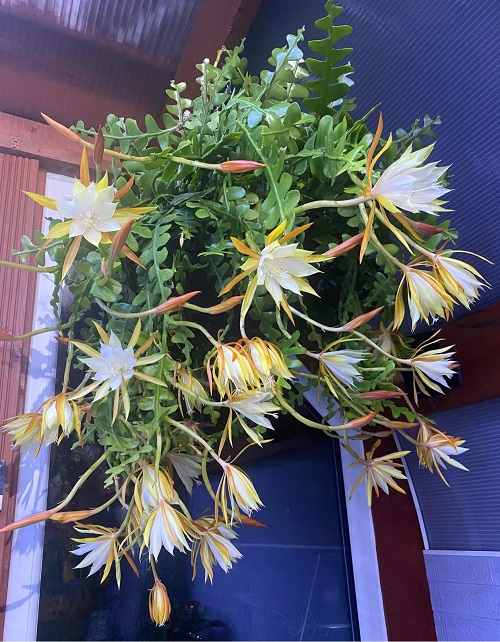Make your Fish Bone Cactus bloom faster with tricks that will surprise you and your guests as to how quickly they can grow with proper care.
The Fish Bone Cactus (Epiphyllum anguliger), is a stunning epiphytic cactus admired for its zig-zag stems and night-blooming, fragrant flowers. Also called as Disocactus anguliger, Zig zag cactus, Ric Rac cactus and Orchid cactus. Making it bloom can be tricky, but with the right care, you can encourage it to flower adorably.
How to Make your Fish Bone Cactus Bloom
1. Provide Bright and Indirect Light
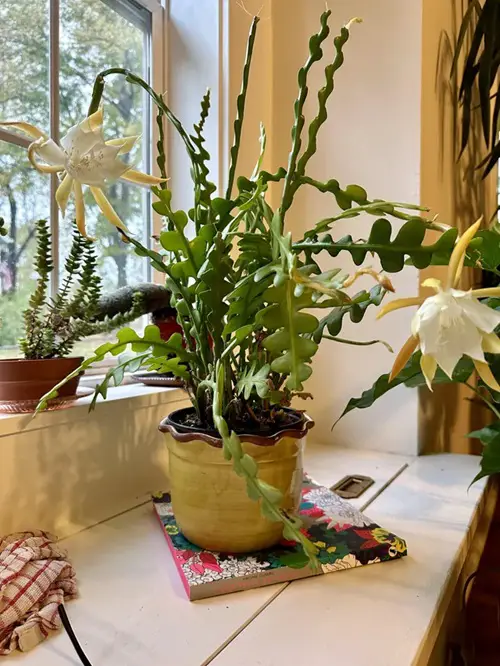
Fishbone cactus naturally grows under forest canopies, so it’s adapted to indirect light rather than scorching direct sunlight. Place your plant near an east- or north-facing window with filtered light. If indoor light is weak, use a full-spectrum grow light.
If the stems start stretching or look flat and pale, that’s your cactus telling you it wants a bit more brightness. Just shift it slightly closer to the light—but not into harsh sun.
2. A Slight Night-Time Cool-Down

A slight drop in night temperature encourages bud formation. So, for a few weeks leading up to its bloom season, keep the room 12–15 °C at night, if possible, for the cacti to bloom eventually.
A small tip: you can even keep it near a slightly open window during early fall nights—just ensure it doesn’t get cold drafts.
3. Practice the Right Watering Routine
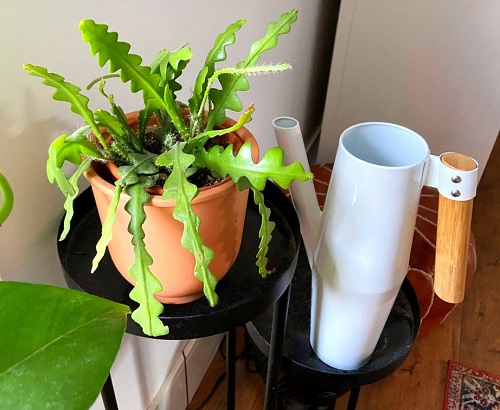
Unlike other cacti, this beauty enjoys consistent moisture, but its roots should not stay waterlogged. For this, try to water deeply when the top few inches of soil have dried, then let the pot drain completely. Reduce watering in the colder months.
When buds appear, avoid sudden changes in watering because even one over- or under-watering session can make them drop.
4. Choose a Well-Draining and Organic Soil Mix

Since this cactus is epiphytic and in the wild, it grows on tree bark, so its roots love air and moisture alternately. Use a self-made mix like orchid bark, perlite, peat, or coco peat with some cactus mix. This balances moisture retention and drainage.
5. Feed with a Bloom‑Encouraging Fertilizer

Flower development needs phosphorus. For this, use a water‑soluble fertilizer low in nitrogen but higher in phosphorus and potassium during spring–summer (every 4–6 weeks). Stop or reduce feeding before the rest phase.
If you prefer organic options, a diluted seaweed extract or bloom-boosting organic fertilizer also works beautifully.
6. Trigger Bloom by Mild Stress
Some stress is needed by everyone to get a drive to get work done. But you must control this for your plants. A controlled stress period can mimic a seasonal change and push the cactus to flower. Slightly reduce watering just before the expected flowering season. Alternatively, provide cooler nights and shorter days, if possible.
7. Maintain Moderate Humidity
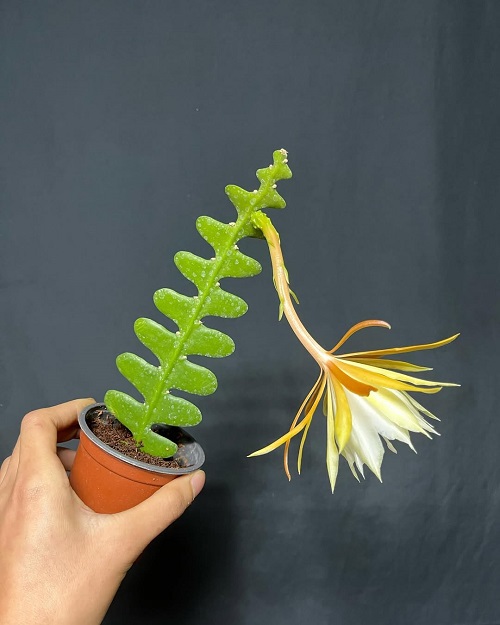
This friend thrives in humid conditions similar to its native rainforest habitat. Use a pebble tray with water, mist occasionally, or group it with other humidity-loving plant friends of yours.
If the tips of the zig-zag stems turn crispy, that’s another sign the air is too dry and your cactus wants extra humidity.
8. Repot and Root Health

Refreshing the soil and ensuring good air flow helps root health, which supports flowering. Repot every 2–3 years in fresh, well-draining mix. Choose a pot only slightly larger to avoid water retention.
After repotting, give the plant a few weeks to adjust and avoid fertilizing immediately—this prevents root burn and helps it settle faster.
9. Give It a Proper Resting Period

The Fishbone Cactus needs a small “nap” to prepare for blooming. Reduce watering, avoid fertilizer, and keep it in cooler temperatures for 4–6 weeks before its bloom season. This rest signals the plant to set buds. Skipping this phase often results in no flowers at all.
10. Avoid Moving It Once Buds Appear
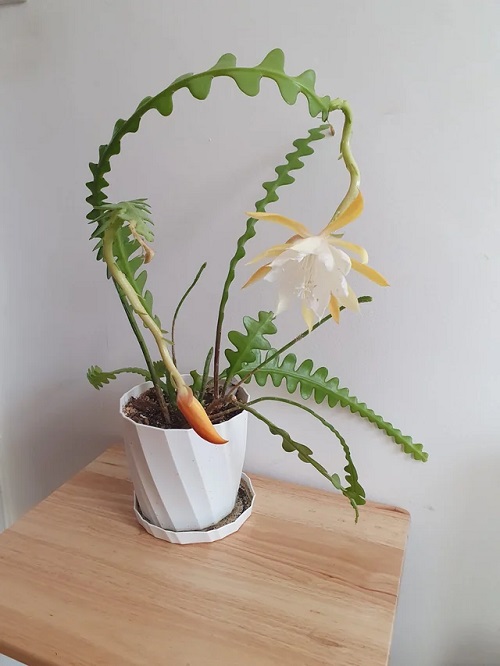
These buds are extremely sensitive! Even rotating the pot or shifting it to a new spot can cause them to fall off. Once you spot tiny buds, keep the plant in the same direction and same place until it flowers fully.
Getting your fishbone cactus to bloom is not tough. It can be tricky, but with the right care routine and love, nothing is impossible. Let us know which care step you have reached for your fishbone cactus in the comments below.

